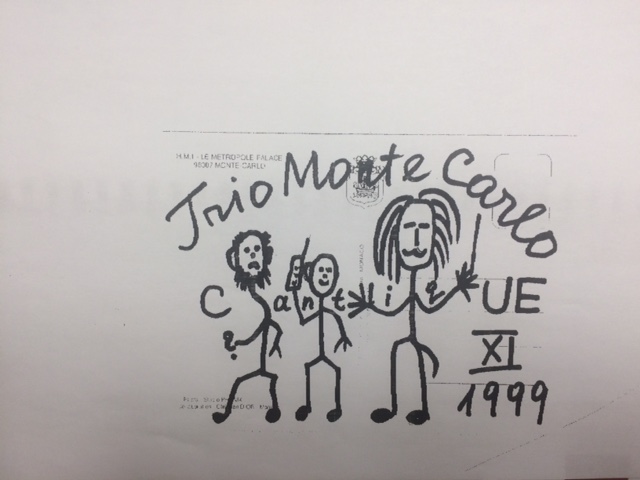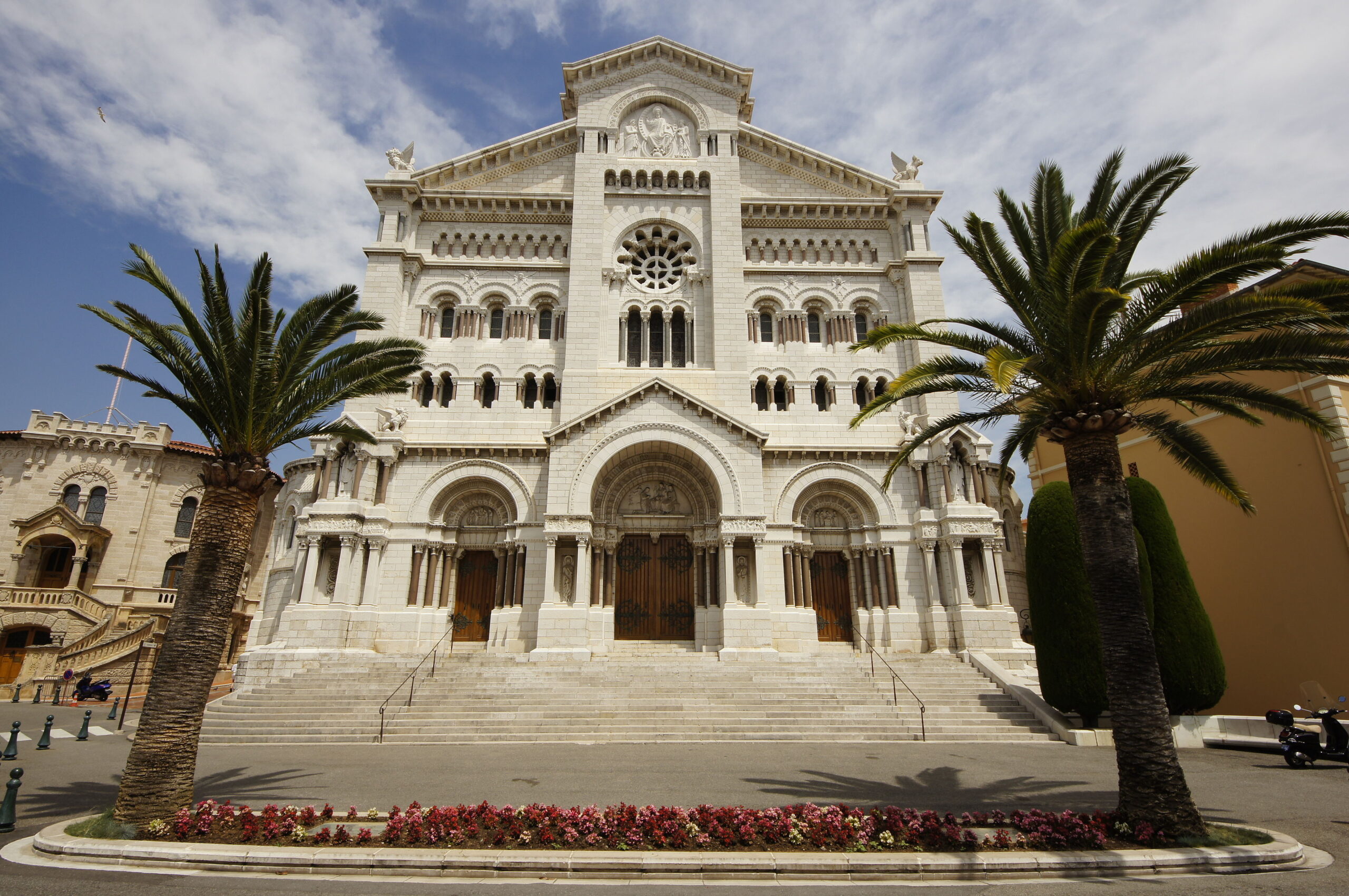I Lift Up Mine Eyes. Celebrating 25 years since the premiere of Arvo Pärt’s Cantique des Degrés
19.11.2024
Text Karin Rõngelep, Arvo Pärt Centre
How does one compose music fit for royalty?
This question might have crossed Arvo Pärt’s mind when, in February 1998, he received a letter bearing the coat of arms of the Principality of Monaco. Inside was a modest request from Princess Caroline, seeking a unique gift for her father, Prince Rainier III of Monaco, who was 76 at the time. The gift to be – a premiere performance of an Arvo Pärt composition – would commemorate the 50th anniversary of Rainier’s reign, the longest in the centuries-long history of the Grimaldi dynasty.
Princess Caroline, an active figure in European cultural life, did not have to wait long for his affirmative response. Pärt later recalled that composing Cantique was particularly joyous, thanks to his warm relations with the Grimaldi family.
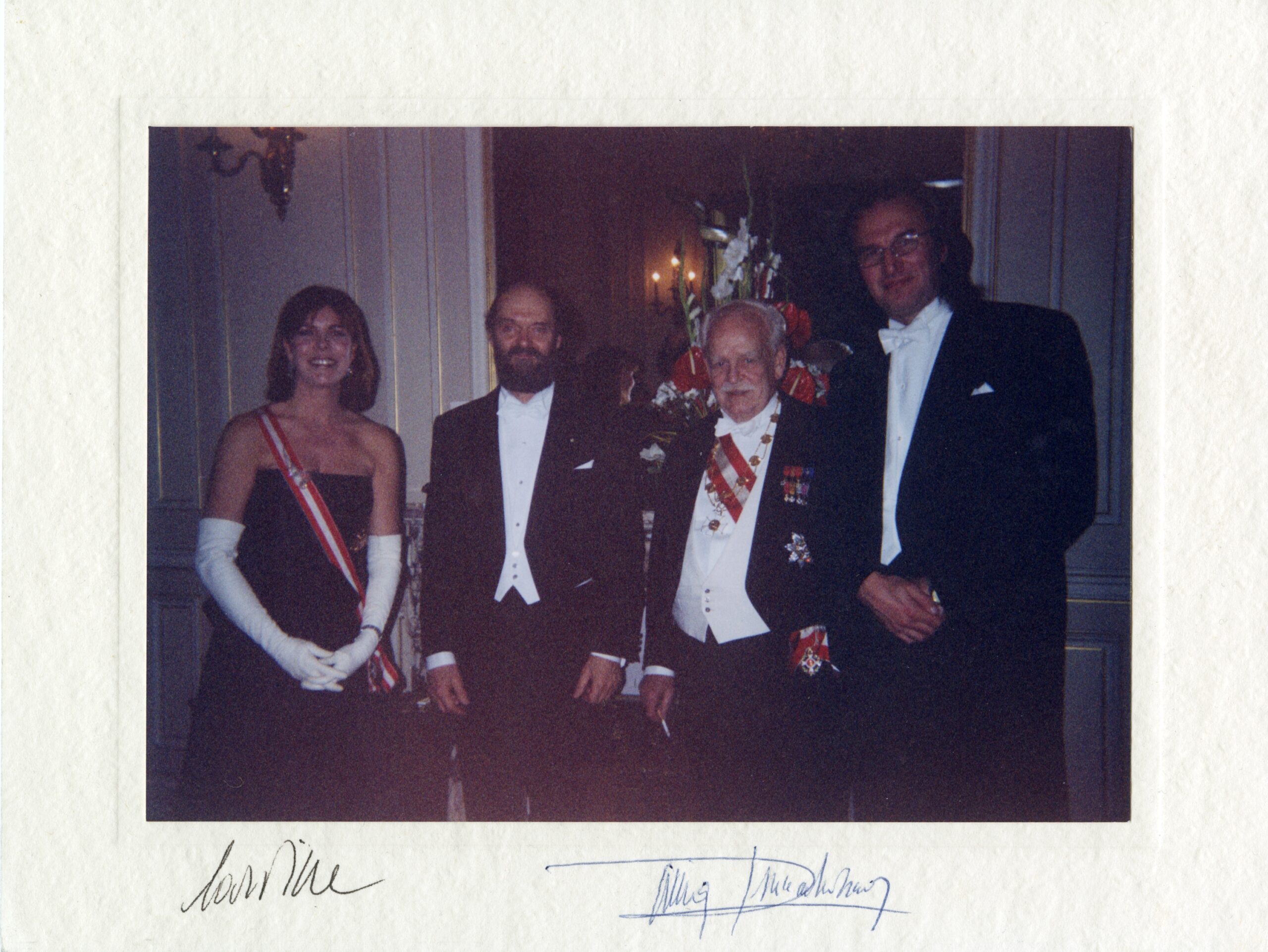
Princess Caroline of Hanover, Arvo Pärt, Prince Rainier III of Monaco and Tõnu Kaljuste on November 19th 1999.
For this piece, Pärt began the creative process by selecting an appropriate text. Turning to the Book of Psalms, he decided on Psalm 121 (120), “I will lift up mine eyes unto the hills” is one of the fifteen Songs of Ascents sung by ancient pilgrims on their way up to the Temple Mount in Jerusalem. The work’s title, Cantique des degrés, is in French – the official language of Monaco – and translates to Song of the Steps, a reference to singing while ascending the steps to Solomon’s Temple, symbolising the journey towards Heavenly Jerusalem.
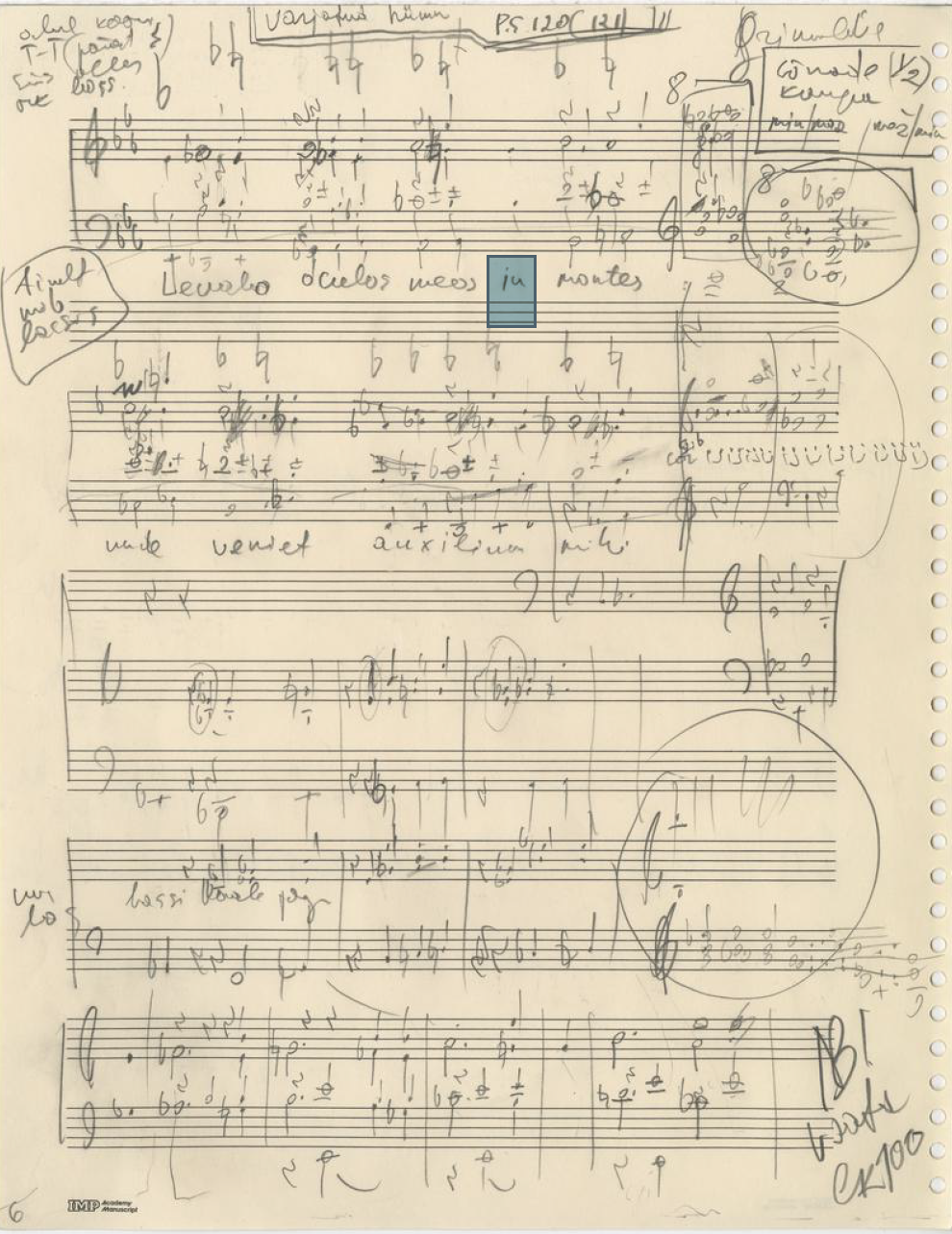
One of the earliest sketches of the Cantique des degrés in Arvo Pärt’s music diary.
Pärt has frequently drawn from Psalms in his compositions, using them altogether twelve times. Psalm 121 also underpins his 1984 work Ein Wallfahrtslied (Pilgrims’ Song). Other composers have been drawn to this psalm, such as Felix Mendelssohn in his oratorio Elijah, featuring the angelic trio “Hebe deine Augen auf” (“Lift up your eyes”).
At first glance, Cantique’s sound and mood seem uncharacteristic of Pärt. The ceremonial musical procession sounds like an epic fairytale or a “hidden hymn”, as hinted at in one of the composer’s sketches. This work lacks Pärt’s typical sonic austerity, reductionism and moments of silent introspection, instead offering a richer harmony that evokes the late Romanticism of Brahms or Mahler. The music unfolds like a carpet ascending a grand staircase to a ball, ending with a hymnal coda that whimsically adds, “And if they are not dead…”, reminiscent of a classical fairy tale.
On closer inspection, however, the structure of Cantique adheres to a clear order and employs various “formulas” that Pärt enjoys using in his works. Many pages of his musical diaries outline rules and principles intended to frame his flights of fancy. While its sound diverges from his well-known tintinnabuli pieces, the choral part consistently uses the tintinnabuli technique – Pärt’s unique signature.
The title Song of the Steps is vividly reflected in the music: each of the eight verses of the text is set in a new key, with the overall melodic line ascending step-by-step, each step consistently a third apart. Pärt remarks that these distantly related keys resemble a royal genealogy, where all individuals are remotely linked, and the alternating majors and minors symbolise the ebb and flow of joy and sorrow in their lives. The skies over Monaco have not always been cloudless – in 1982, Prince Rainier’s wife and Caroline’s mother, American film star Grace Kelly, was tragically killed in a car accident.
The premiere of Cantique des Degrés took place during the Thanksgiving service on Monaco’s National Day, 19 November 1999, at the Monaco Cathedral.
The performance featured world-class talent: the Monte Carlo Philharmonic and the Monte Carlo Opera Choir, conducted by Tõnu Kaljuste, for whom the style of Cantique might also have been somewhat unexpected: “This is a piece by a stylistically evolving Pärt that will surprise his admirers,” he noted in a news article in Päevaleht titled “Kaljuste conducts Pärt before crowned heads”.
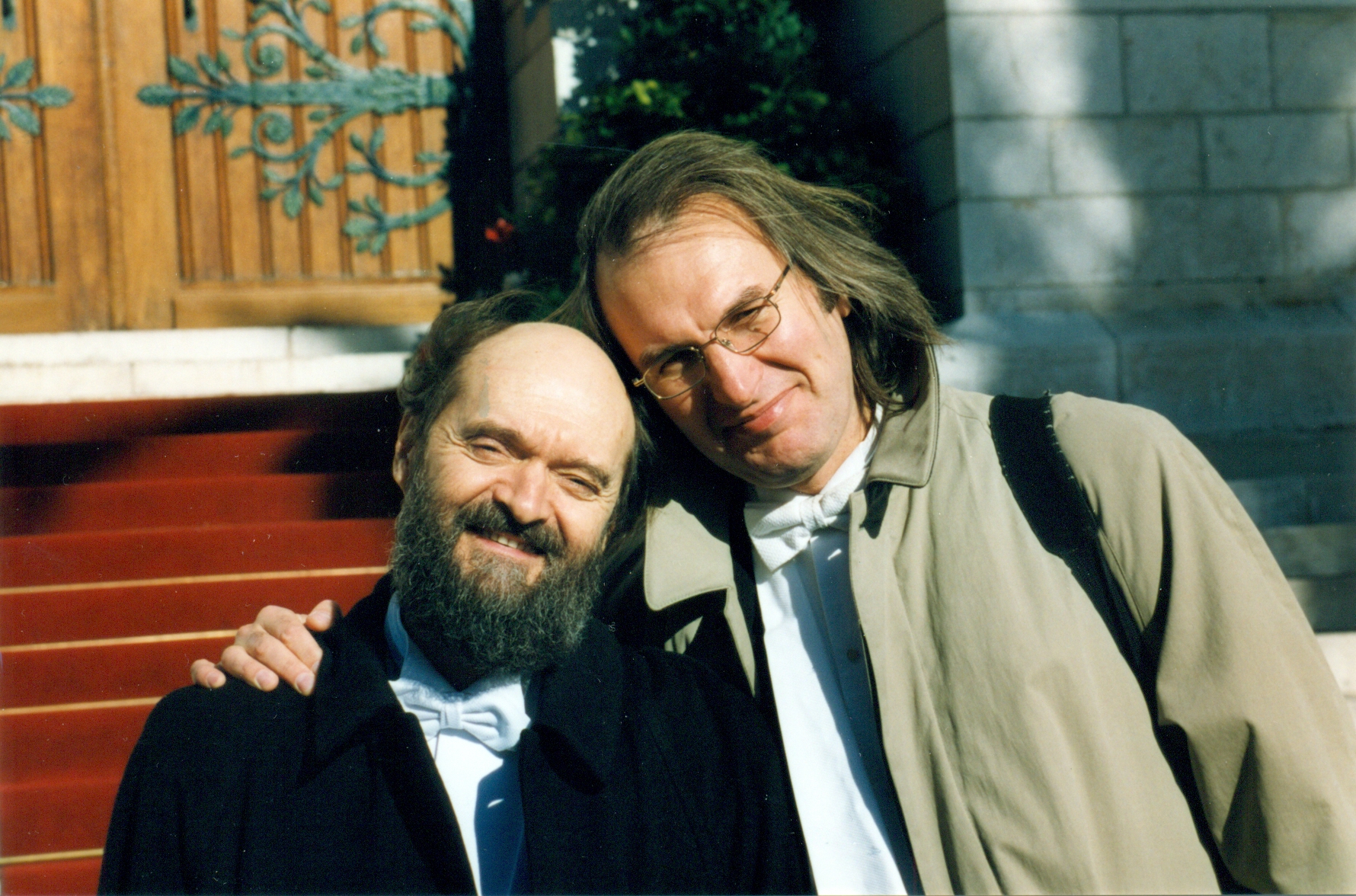
The composer and conductor after the premiere.
The royal family of Monaco was greeted by a full house of dignitaries from around the world. Numerous journalists were stationed on the cathedral square to cover the event in the media.

Arvo Pärt once said, “A composer must always have a question mark in his pocket.” This sentiment is humorously captured in the sketch Monte Carlo Trio, where the composer depicts three characters associated with the premiere in Monaco: the publishing representative Eric Marinitsch, aptly holding a (then-fashionable) mobile phone; conductor Tõnu Kaljuste, perpetually accompanied by a musical note; and the composer himself, always left with a question mark.
